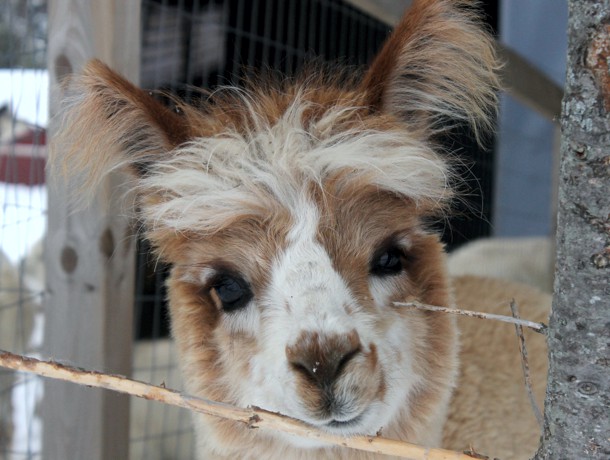Congenital Disqualifiers
The continued quality of our National herd depends on you.
The breed standards the CLAA employs today were developed from the screening criteria applied to the original imported animals. The overriding consideration in developing those screening standards was to create a series of objective criteria that would check as many functionally important and/or potentially heritable defects as possible. For each of the characteristics a minimum level of acceptability was defined (hence the term used on the registration application – minimum breed standards).
The initial screening of imported or foundation stock animals did of course not guarantee that all animals imported into Canada were free of all structural and/or potentially heritable defects. One of the obvious limitations of phenotypic screening is the inability to detect carriers for specific potentially heritable defects in structurally normal animals. While not perfect the system in use by the CLAA does provide a good method for the potential elimination of many animals with undesirable traits in our purebred registered herd. Structural and genetic soundness should be an extremely important trait for selection in breeding stock for all our members.
The CLAA rules of registration require that congenital defects are evaluated at birth and alpacas exhibiting one or more of the listed congenital disqualifiers be denied registration. Firstly though – what does congenital mean. Simply, congenital refers to a trait that an animal is born with (ie existing at the time of birth).
There are two options for the origin of a genetic defect occurring in a newborn: 1) a point mutation in that animal but not pre-existing in the parents and 2) a genetic defect carried by one or both parents and transmitted to the offspring. Either way though, although these observed defects may not have been inherited from sire and dam, heritable defects are genetically programmed in that animal and can be passed on from the affected animal to their progeny.
A common misconception is the opinion that a trait may not be heritable because the dam and/or sire have produced multiple progeny that were normal. Heritable defects are often very complex and usually do not result in a high frequency of abnormal neonates. Rather these defects are often passed onto progeny and may surface many generations distant from the affected dam or sire. The most common body systems to be affected by congenital defects are reproductive, musculoskeletal and cardiovascular) (David Anderson 2001).
Now, many veterinarians have taken the position that all congenital defects in alpacas should be considered heritable until proven otherwise because of the seemingly high prevalence of congenital defects (possibly originally caused by a dramatic narrowing of the genetic base after the Spanish invasion of South America in the 1500's). This may appear to be a harsh stance but when a defect is not proven to be non-heritable we must play safe and assume that hereditary components play a part in the matter. The reverse opinion "show me that it is heritable" can be quite dangerous for a breed, particularly one that is striving to become established in new market places.
Continued application of screening for congenital disqualifiers by all our members provides an important step in developing a strong Canadian registry. It helps develop a registry that can be considered over time relatively free from defects judged to be serious and from structural unsoundness of our registered breeding stock population. To be successful however, it does need the collective co-operation of all our members. It is not a unique system – the Australian alpaca registry requires that each male alpaca be screened by a qualified veterinarian to standards extremely similar to our own before any of it's progeny are eligible for registration – but it is an important one.
Quite simply the recognised use by Canadian breeders of these standards will serve to add value to the Canadian registry and confidence to any serious alpaca breeder, domestic or International, looking to improve the quality and predictability of their herds.
SUMMARY OF CONGENITAL DEFECTS
– that disqualify an animal for registration
- Gopher and Fused Ears
- Banana ears (for alpacas only)
- Juvenile Cataracts
- Juvenile Blindness
- Wry Face
- Choanal Atresia
- Curled (fused) ears
- Ectropian and Entropian (eyelids)
- Deafness
- Lateral Deviation of the spine
- Crooked tails (permanent deviation)
- Polydactyl
- Syndactyl
- Luxating patellas
- No more or less than four teats on a male (exception geldings)
- No more or less than 2 equal-sized testicles in the scrotum (Exception geldings)
- No more or less than four functional teats on a female
- Eptopic testicles on a male
- Vaginal opening not near vertical plane
- Lack of any part of the reproductive system
- Hermaphroditism
- Supernumerary Teats


